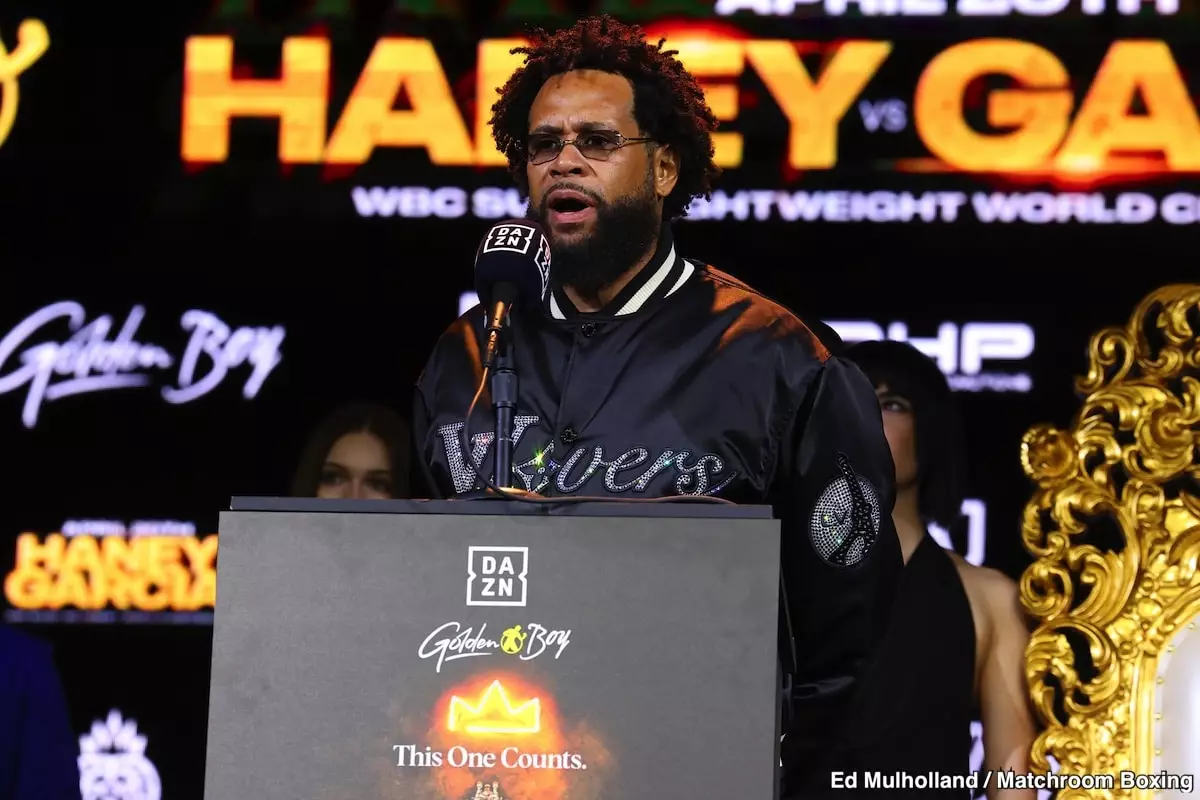Boxing, a sport steeped in tradition and fierce rivalry, has evolved over the years to encompass not only the physical battles inside the ring but also legal disputes that can have significant implications. One of the latest flashpoints in this arena involves rising star Devin Haney and his lawsuit against fellow boxer Ryan Garcia. This article explores the motivations behind the lawsuit, its implications for both fighters, and the broader impact on the sport.
At the heart of the issue lies an April 20th bout at Barclays Center in Brooklyn, New York, where Devin Haney faced Ryan Garcia. The match, while highly anticipated, resulted in a majority decision loss for Haney, leading to significant controversy. Following the fight, it was revealed that Garcia tested positive for Ostarine, a banned performance-enhancing drug (PED). This revelation prompted Haney and his legal team to file a lawsuit, accusing Garcia of battery, fraud, and unjust enrichment.
Bill Haney, Devin’s father and promoter, emphasized that such lawsuits are not uncommon in boxing, framing them as part of the business. His comments indicate a desire to address perceived injustices and restore Devin’s reputation after the fight, which many believed impacted his standing as one of the sport’s top talents. Bill questioned the legitimacy of the damages awarded to Garcia’s promoter, Golden Boy Promotions, which received $1 million, arguing it raises questions about the fairness of the boxing industry in dealing with fighters and promotions alike.
The Legal Stakes Involved
Legal action in sports, particularly boxing, often revolves around issues of reputation, physical safety, and financial opportunity. In this case, Devin Haney is reportedly seeking punitive damages, aiming to not only recover his losses but also send a message about the integrity of the sport. The lawsuit arises at a time when boxer reputations can be severely damaged based on the outcomes of individual fights, especially when complicated by issues such as doping.
Haney’s case underscores a point of contention within the boxing community—what constitutes actual damages? Bill Haney’s frustration suggests that while Golden Boy Promotions claims to have incurred losses, it is the fighters who bear the brunt of negative publicity and career ramifications. A successful lawsuit could not only restore Devin’s image but also set a precedent for how future disputes between fighters and promotions are to be handled, potentially altering the landscape of boxing contracts and agreements.
For both Haney and Garcia, this lawsuit could have lasting impacts beyond financial compensation. For Devin, proving his case could redeem his reputation, returning him to the spotlight as a leading figure in boxing. Conversely, a ruling in favor of Haney could tarnish Garcia’s standing and alter the trajectory of his career.
The lawsuit also reflects broader concerns within boxing regarding the prevalence of performance-enhancing drugs. As the sport grapples with allegations of doping, this case may contribute to an ongoing discussion about the efficacy of current regulations and the sports commissions’ ability to maintain integrity in the ring.
Bill Haney’s remarks also extend to criticism of notable figures such as Oscar De La Hoya and Bob Arum, both of whom have legacy ties in the sport. The involvement of Hall of Fame promoters in advising against lawsuits suggests a reluctance to engage in legal disputes, often viewed as detrimental to the sport’s image. However, as Haney pointed out, prominent figures like Marvin Hagler and Terence Crawford have also engaged in litigation, challenging the notion that lawsuits have no place in boxing.
Ultimately, this case goes beyond the personal grievances of two fighters; it taps into fundamental issues regarding fairness, accountability, and the culture within professional boxing. Whether Devin Haney’s lawsuit against Ryan Garcia will succeed in the courts remains to be seen, but it undoubtedly highlights an ongoing struggle for rights and recognition in a sport where reputation and legacy are paramount.

